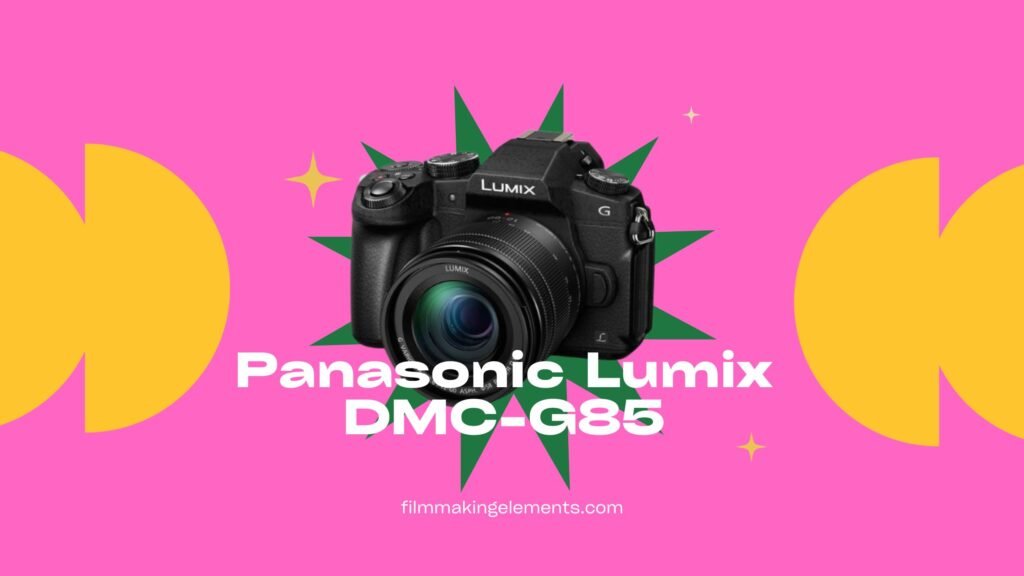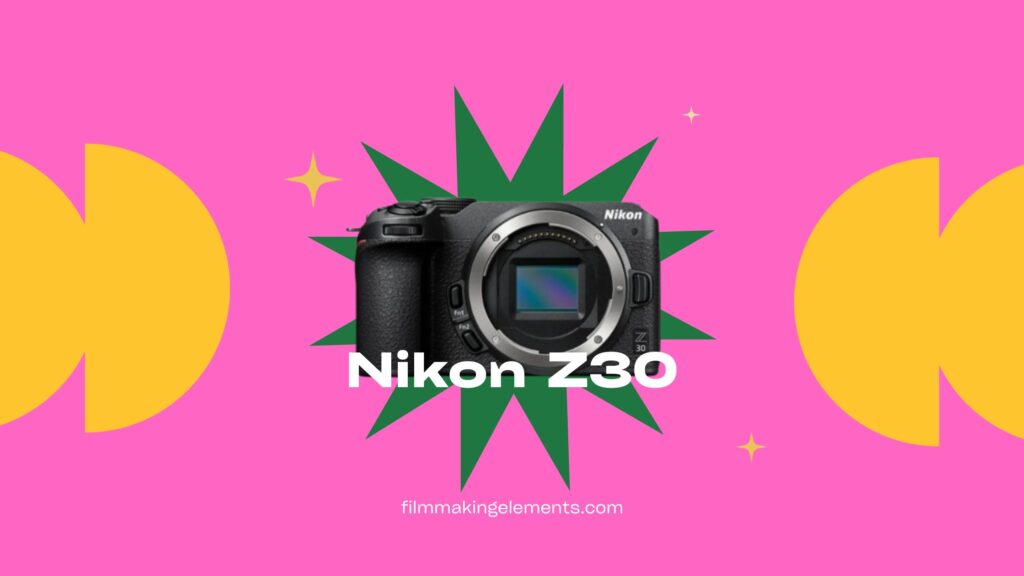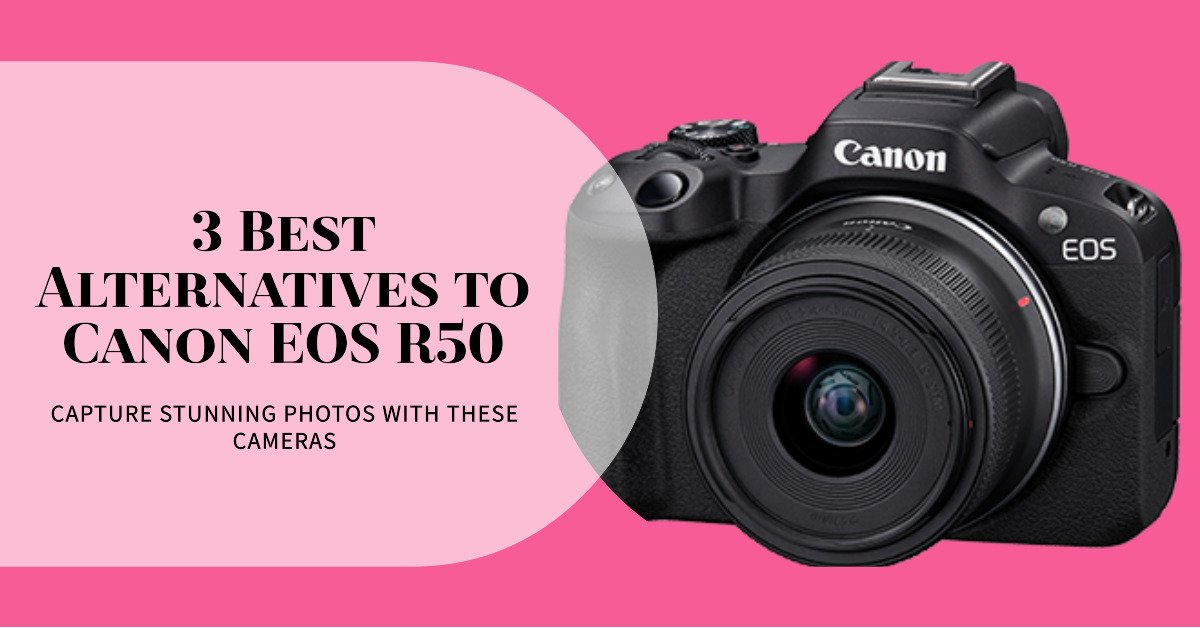In the ever-evolving world of mirrorless cameras, the Canon EOS R50 stands out as a testament to Canon’s commitment to pushing boundaries. As someone who’s been immersed in the world of photography and videography for years, I can’t help but be impressed by Canon R50. Now, as impressed as I am with the EOS R50, there are photographers and videographers out there who might be on the hunt for alternatives, either due to brand preference, specific feature needs, or budget constraints. In this article, I’ll walk you through the top three alternatives to the Canon EOS R50, weighing in on their pros and cons to help you make an informed decision.
1. Sony ZV-E10

Being deeply entrenched in the world of photography and videography, I’ve been privileged to witness the evolution of camera technology firsthand. As brands like Sony and Canon relentlessly push the envelope, the line distinguishing their offerings has become increasingly blurred. With Canon’s EOS R50 making waves in the market, I thought it prudent to shine a light on Sony’s ZV-E10, which has emerged as a robust alternative. Let’s delve deeper into a side-by-side comparison of their specifications and capabilities.
Sensor
Both Sony’s ZV-E10 and Canon’s EOS R50 come equipped with a 24.2-megapixel APS-C sensor. While these sensors might be more compact than full-frame counterparts, they certainly don’t compromise on image quality and low-light efficacy. It’s worth noting the 1.6x crop factor inherent to APS-C sensors. For instance, using a 50mm lens on such a camera effectively gives you an 80mm focal length on a full-frame setup. Depending on your preferences, this could be either advantageous or limiting.
Autofocus and Lens Compatibility
In the realm of autofocus, both contenders are power-packed. Sony’s ZV-E10 boasts Dual Pixel CMOS AF II with a staggering 4,503 AF points, 3,713 of which are optimized for video. Canon’s EOS R50, on the other hand, employs the earlier version of Dual Pixel CMOS AF but offers 651 AF points. Both can effortlessly switch between tracking human and animal eyes, thanks to recent software enhancements.
When it comes to lens compatibility, Sony’s ZV-E10, leveraging the E-mount system, enjoys access to an expansive lens library, both from Sony and third-party creators. The EOS R50, meanwhile, adopts Canon’s newer RF mount. Though promising in terms of advanced lens design possibilities, the RF ecosystem is still nascent, especially concerning APS-C specific lenses.
Design & Ergonomics
Both these cameras exude portability, boasting compact frames that are perfect for on-the-go shooting. The Sony ZV-E10, with its dimensions of 115 x 64 x 44 mm and a weight of 343 g, adopts a more streamlined approach in design. Canon’s EOS R50, slightly heftier at 440g and measuring 133 x 88 x 70 mm, retains more traditional DSLR aesthetics.
Viewfinder & Display
Their touchscreens, crucial for vloggers and content creators, are fully articulated. Sony’s offering has a 3-inch, 1.62 million-dot screen, while Canon outshines slightly with a 3.2-inch screen and 2.1 million dots. For those who swear by EVFs, both cameras won’t disappoint; though, the EOS R50 takes a slight edge with its larger viewfinder and higher resolution.
Battery Life
For vloggers, battery life can make or break a shoot. Sony’s ZV-E10, powered by the NP-FW50 battery, promises 440 shots or 125 minutes of video per charge. The EOS R50, utilizing the LP-E12 battery, offers 250 shots or 85 minutes of video. Both models, fortunately, support USB-C charging – an absolute boon for creators on the move.
Video Capabilities
Videography is where these cameras truly flex their muscles. Sony’s ZV-E10 emerges as a powerhouse, offering oversampled 4K at 30fps and Full HD at a silky-smooth 120fps. It also champions S-Log profiles for advanced color grading and HLG for HDR output. Canon’s EOS R50, while competent with uncropped 4K at 30fps and Full HD at 60fps, doesn’t quite match Sony’s prowess in this domain.
Price
The Sony ZV-E10, priced at $699 (body only) or $799 with its kit lens, offers remarkable value. Canon’s EOS R50 is similarly priced at $679 for the body and $799 with its kit lens. While both have various bundles available, your choice ultimately boils down to brand loyalty, specific needs, and budget constraints.
2. Panasonic Lumix DMC-G85

Considering the Panasonic Lumix DMC-G85 as a Good Alternative to Canon EOS R50. I’ve had hands-on experience with numerous cameras, but the Panasonic Lumix DMC-G85 has particularly caught my attention, especially when stacked against the Canon EOS R50. Let’s delve into their features and specifications.
Sensor
Using the G85, I immediately noticed its Micro Four Thirds sensor, smaller than the APS-C sensor in the Canon R50. This results in a 2x crop factor for the G85, as opposed to the R50’s 1.6x. This distinction significantly affects the field of view, depth of field, low-light performance, and dynamic range.
While shooting, the 24.2-megapixel resolution of the Canon R50 gave it a clear advantage over the 16-megapixel G85 in terms of image detail. However, without an anti-aliasing filter, the G85 consistently delivered sharper images with less moiré.
Autofocus and Lens Compatibility
Both cameras have impressive autofocus capabilities. The G85 employs Depth from Defocus (DFD) technology, contrasting with the R50’s Dual Pixel CMOS AF II. Although both are swift, the R50’s 651 focus points covering 88% of the frame exceeded the G85’s 49 points covering 49%.
Lens compatibility is crucial. With the G85’s Micro Four Thirds mount, I’ve used a plethora of lenses from Panasonic, Olympus, Sigma, and more. The R50’s RF mount offers fewer lens options, but they often have faster apertures. Not to mention, with an adapter, the R50 becomes compatible with the extensive EF and EF-S lens lineup.
Design & Ergonomics
Physically, the G85 is more substantial, weighing 505g and measuring 128 x 89 x 74 mm. In contrast, the R50, at 375g and 116 x 86 x 69 mm, felt lighter in my hands. Both, however, boast ergonomic designs.
In rugged conditions, I’ve found the G85’s splash- and dust-proofing invaluable. Its sensor-shift image stabilization system has been a boon for me, especially when lenses without stabilization are mounted.
Viewfinder & Display
Through my lens testing, I’ve seen the benefits of the G85’s 0.74x magnification EVF with 2.36 million dots, larger and more detailed than the R50’s 0.62x magnification EVF with 2 million dots.
Screen-wise, both offer 3-inch fully articulated touchscreens. However, the R50’s 1.62 million-dot resolution edged out the G85’s 1.04 million dots in clarity and sharpness.
Battery Life
On intense shoots, the G85 gave me up to 330 shots with its DMW-BLC12 battery pack, while the R50 stretched to 440 shots on its LP-E17. I also appreciated the G85’s optional battery grip, DMW-BGG1, for longer sessions and vertical shots.
Video Capabilities
Both cameras deliver 4K video at 30 fps. But while the G85 had a 1.1x crop, the R50 offered an oversampled, uncropped 4K from 6K, capturing broader scenes with more detail. The G85’s additional video features, such as 4K Photo, Post Focus, and Cinelike profiles, enhanced its versatility. Yet, the R50’s Dual Pixel CMOS AF II, higher frame rates, and extended recording times made it equally compelling for videography.
Price
The G85 set me back around $629 with its 12-60mm f/3.5-5.6 kit lens, while the R50 was slightly more affordable at about $599 with its 18-45mm f/4.5-6.3 kit lens.
3. Nikon Z30

Having worked extensively with various camera models, I’ve recently been hands-on with both the Nikon Z30 and Canon EOS R50—two of the most sought-after entry-level APS-C mirrorless cameras tailored for content creation. Let me share my expertise on how the Nikon Z30 can be a good alternative to the Canon EOS R50 based on seven key aspects:
Sensor
While both cameras feature APS-C sensors, the Z30 has a crop factor of 1.5x, and the R50 comes in slightly higher at 1.6x. As an expert, I’ve seen that APS-C sensors offer benefits like affordability, reduced weight, and compactness. In the resolution arena, the Z30 boasts a 20.9MP sensor, a bit behind the R50’s 24.2MP. This difference might matter when cropping or printing large, but for many tasks, both do the job.
Autofocus and Lens Compatibility
Experience has taught me the importance of a good autofocus system. The Z30 provides 209 autofocus points, whereas the R50 impresses with 651 points. Despite the disparity, both have served me well in diverse scenarios. As for lens mounts, the Z30 uses the Nikon Z mount, and the R50 employs the Canon RF mount. Both mounts are new, but I’ve used adapters successfully with them, allowing a wider lens selection.
Design & Ergonomics
Holding the Z30 (128 x 74 x 60 mm and 405 g) feels slightly more compact than the R50 (133 x 88 x 70 mm and 440 g). Both sit comfortably in hand, but I especially appreciate the Z30’s dedicated video recording button and the R50’s top LCD for quick settings check.
Viewfinder & Display
The absence of a built-in viewfinder in the Z30 contrasts with the R50’s inclusion of one. For shots in bright environments, I often prefer a viewfinder. Both cameras, however, come equipped with a 3-inch vari-angle touchscreen with a resolution of 1.04 million dots, offering flexibility in various shooting conditions.
Battery Life
During my shoots, the Z30, with its EN-EL25 battery, gave me up to 330 shots per charge, outlasting the R50’s LP-E17 which offers around 250 shots. For long shoots, I’ve relied on USB-C cables and external power banks. Both models also have optional battery grips for prolonged usage.
Video Capabilities
Both the Z30 and R50 can shoot 4K UHD videos at 30 fps with no cropping, ensuring top-tier video quality. Slow-motion enthusiasts, like me, will appreciate the Full HD at 120 fps capability. While both have dual microphones and ports for external ones, the absence of headphone ports is a shared shortcoming.
Price
For those budgeting, the Z30 is priced at $710 (body only), $850 with the 16-50mm f/3.5-6.3 VR lens, or $1050 bundled with the 16-50mm and 50-250mm f/4.5-6.3 VR lenses. In comparison, the R50 stands at $679 for the body alone and $799 when paired with the 18-45mm f/4.5-6.3 IS lens.
- Also Read: Top 3 Canon EOS R6 Mark II Alternatives
- Also Read: Top 3 Canon EOS R7 Alternatives
- Also Read: 3 Best Eizo Monitors For Color Grading In Davinci Resolve





